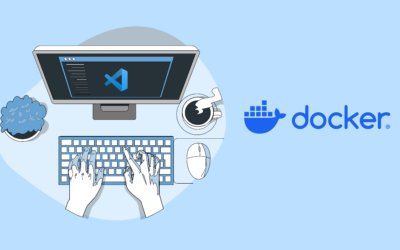Table Of Content
In the fast-paced world of software development, effective dependency management is crucial for maintaining the stability, security, and efficiency of applications. As organizations increasingly adopt Continuous Integration (CI) and Continuous Delivery (CD) practices, the need to manage dependencies efficiently becomes even more critical.
Dependency management involves handling the external libraries, tools, and components an application relies on, ensuring they are correctly resolved, updated, and maintained throughout the development lifecycle.
A foundational aspect of successful dependency management is achieving visibility into all dependencies used within a project. This visibility provides a comprehensive understanding of all libraries, modules, and components, including their versions and interdependencies.
By maintaining clear insights into these dependencies, development teams can prevent conflicts, enhance security, and streamline the update process.
This blog post explores various strategies and tools for managing dependencies effectively within CI/CD pipelines. By aligning dependency management strategies with CI/CD best practices, organizations can enhance their development workflows, ensuring the faster delivery of secure and reliable software.
What is a Package?
In dependencies, a package refers to a code bundle with libraries, modules, or other resources grouped to provide specific functionality. Packages manage and distribute reusable code components, making it easier to share and integrate them into different projects.
Packages promote modularity and reusability by allowing developers to encapsulate functionality into discrete units that can be reused across different projects. This reduces code duplication and improves maintainability.
Dependency management tools use package metadata to resolve dependencies. They automatically download and install the required packages and their dependencies, ensuring the correct versions are used. Every time the package or artifact, as it is commonly called, is installed, developers run tests through the CI/CD pipeline.
Version Control and Consistency
Version control (VC) ensures consistency and reliability across various environments. A critical aspect of version control is version locking, which involves specifying the exact version of each dependency required within configuration files. This practice, along with pinning dependencies, is essential to prevent unexpected changes or compatibility issues during deployment.
For instance, in Python, you would pin dependencies in a requirements.txt file, whereas in Node.js, this would be done in a package.json file. Additionally, using semantic versioning (major.minor.patch) helps teams understand the impact of updates, allowing for better decision-making when integrating new versions.
To further ensure consistency, dependency lock files such as Pipfile.lock or yarn.lock capture the exact versions of all dependencies. These lock files should be committed to your version control system to guarantee that the same versions are used in all environments, from development to production. This approach mitigates the risk of discrepancies that could lead to failures or bugs in the deployment process.
By rigorously managing versions and maintaining lock files, teams can achieve high consistency, which is crucial for the smooth operation of Continuous Delivery pipelines.
Dependency Management Tools
Effective dependency management is facilitated by utilizing various tools and strategies. One key method is leveraging industry-standard package managers like npm (JavaScript), Maven (Java), pip (Python), or NuGet (.NET). These package managers automate the process of declaring, downloading, and managing dependencies, significantly reducing the risk of conflicts and ensuring that all necessary libraries are correctly resolved.
In addition to package managers, implementing private artifact repositories such as Nexus or Artifactory can greatly enhance dependency management. These repositories provide a centralized location for storing and sharing internal and external dependencies, improving security by controlling access to artifacts and increasing build performance by reducing the time needed to download dependencies from external sources.
Integrating these tools and strategies helps organizations achieve a more streamlined and reliable dependency management process. This ensures that the right versions of dependencies are consistently used across all development and deployment stages, further enhancing the stability and predictability of Continuous Delivery pipelines.
Dependency Tree
A crucial concept in dependency management is the dependency tree, a hierarchical representation of all the dependencies a project requires. It visually maps out each dependency and its sub-dependencies, showing their interconnectedness. Understanding and managing the dependency tree is essential for ensuring the stability and reliability of your software.
Components of a Dependency Tree: The root node represents the project itself, branching into direct dependency nodes, which further branch into transitive dependencies.
Importance: The dependency tree provides visibility and insight into the structure and complexity of the project’s dependencies, helps detect conflicts, allows for impact analysis, and optimizes builds by identifying unnecessary dependencies.
Management: Tools like Maven, npm, and pip automatically generate and manage the dependency tree, resolving and detecting conflicts. Regular audits using tools like Snyk and OWASP Dependency-Check can identify outdated or vulnerable dependencies, and maintaining documentation of your dependency tree aids in troubleshooting and planning updates.
Automated Dependency Updates
Automated dependency updates are essential in modern software development, particularly in Continuous Delivery (CD). Tools like Dependabot, Renovate, and Greenkeeper streamline this process by automatically checking for and updating dependencies. Setting up automated pull requests (PRs) for these updates and integrating them into your CI/CD pipeline offers several advantages:
- Consistency: Automated tools continuously monitor your dependencies and generate pull requests when new versions are available, ensuring your project always uses the latest, most secure versions of libraries.
- Efficiency: Automation reduces the manual effort required to check for updates, allowing developers to focus on core tasks and maintain a regular update schedule.
- Security: Regular updates help to patch vulnerabilities promptly. Automated tools can integrate with security databases to alert you to and fix known vulnerabilities in your dependencies.
- Reliability: Automated pull requests are tested in isolated environments before merging, ensuring that updates do not break your application.
Automate and Integrate: CI/CD Pipeline Integration
Integrating automated dependency management into your CI/CD pipeline is crucial for maintaining a robust and reliable development workflow. Here’s how this integration works and what it encompasses:
1. Dependency Management in CI/CD:
- Automated Dependency Resolution: During the build stage, the CI/CD pipeline automatically downloads and installs dependencies based on your project’s specifications. This ensures consistency across all environments and reduces manual errors.
- Dependency Checks: The pipeline runs checks to ensure that all dependencies are compatible and up-to-date. This can include running tests to verify that updates do not introduce breaking changes.
- Vulnerability Scans: Automated tools scan dependencies for known vulnerabilities and alert you if any are found. This helps maintain the security of your application.
2. Automated Pull Requests:
- Pull Request Creation: Tools can create pull requests for each update, detailing the changes and any potential impact. These pull requests are then reviewed and tested before merging.
- Continuous Integration (CI): Each pull request triggers the CI pipeline, which runs a suite of automated tests to ensure the update does not break existing functionality.
- Fail Fast Configuration: Configure your CI/CD pipeline to fail fast if there are issues with dependencies. This helps quickly identify and resolve problems and prevents faulty updates from propagating through the pipeline.
Challenges when Automating Dependencies
While automated dependency updates offer numerous benefits, there are also potential challenges to consider:
- Overhead: Frequent updates can lead to a high volume of pull requests, which may overwhelm the review process. It’s important to manage the frequency and prioritize critical updates.
- Compatibility Issues: Automated updates may sometimes introduce breaking changes. Ensure that comprehensive automated testing is in place to catch such issues early.
- False Positives: Security scanners might occasionally flag benign issues as vulnerabilities. It’s important to review and assess the relevance and impact of each reported vulnerability.
- Performance Impact: Regular updates can impact build times and performance. Optimize your CI/CD pipeline to handle updates efficiently without significantly slowing development.
Dependency Scanning
Dependency scanning identifies all the external libraries and components your application depends on, both directly and indirectly (transitive dependencies). Its goal is to create a comprehensive picture of your application’s dependency ecosystem. While dependency scanning may flag potential security vulnerabilities within these identified dependencies based on known vulnerability databases, it does not directly analyze your application’s code for vulnerabilities.
This process is critical to maintaining a secure and compliant software development lifecycle, particularly within Continuous Delivery pipelines. Implementing robust security scanners and regularly auditing dependencies for vulnerabilities can significantly reduce the risk of security breaches and ensure that your application remains secure and compliant with licensing requirements.
Implementing Security Scanners
Security scanners such as Snyk, OWASP Dependency-Check, and Retire.js are essential tools for monitoring your project’s dependencies for known vulnerabilities. These tools continuously scan your dependencies against extensive vulnerability databases and alert you to potential security issues. By integrating these scanners into your CI/CD pipeline, you can automate the detection of vulnerabilities and ensure that your codebase is consistently monitored.
Regularly Auditing Dependencies
Regular audits of your dependencies are necessary to identify and address vulnerabilities promptly. Automated tools can be configured to perform these audits regularly, providing reports on discovered vulnerabilities and suggested fixes. This proactive approach helps maintain your application’s security posture and prevents the exploitation of known vulnerabilities.
Security and Updates
Monitoring and updating your dependencies to address security patches is crucial for vulnerability management. Available tools can automate this process, ensuring you are always aware of the latest security patches and updates. Regularly updating your dependencies fixes security issues and improves your application’s stability and performance.
Reproducible Builds
Achieving reproducible builds is a critical goal in Continuous Delivery, ensuring your application behaves consistently across different environments. This consistency is essential for reliable testing, deployment, and maintenance. Key strategies to achieve reproducible builds include:
Containerization and Virtual Environments Using containerization tools like Docker and virtual environments (e.g., virtualenv, venv) helps create isolated environments. Containers encapsulate all dependencies and configurations, ensuring your application operates identically in development, testing, and production. Virtual environments manage project-specific dependencies, preventing conflicts and ensuring the correct versions of libraries are used, especially in environments with multiple projects.
Implementing Infrastructure as Code Infrastructure as Code (IaC) tools like Terraform or Ansible allow you to define and manage your infrastructure through code, ensuring consistency across development, staging, and production environments. IaC facilitates automated provisioning and configuration, reducing manual errors and increasing reliability.
By leveraging containerization, virtual environments, and infrastructure as code, you can achieve reproducible builds that enhance your application’s reliability and consistency. These practices ensure your application runs with the same dependencies across all environments, streamlining the development and deployment process within Continuous Delivery pipelines.
Monorepo and Polyrepo Strategies
Managing dependencies efficiently is crucial for maintaining a robust and scalable development workflow. Two common strategies for organizing codebases and handling dependencies are monorepo and polyrepo setups. Each approach has its advantages and tools that facilitate effective dependency management.
Monolithic Repository (Monorepo)
In a monorepo setup, all projects are stored in a single repository. This approach allows for centralized management of dependencies and consistent tooling across multiple projects.
Monorepo setups offer several benefits:
- Consistency: Ensures that all projects use the same version of dependencies and follow the same build and test processes.
- Simplified Refactoring: Easier to refactor code across projects since all code is in one place.
- Shared Code: Facilitates code sharing and reuse among projects without the need for separate package management.
Multiple Repositories (Polyrepo)
In a polyrepo setup, each project has its own repository. This approach provides more autonomy to individual projects, allowing teams to manage dependencies independently but consistently. Key practices for managing dependencies in a polyrepo setup include:
- Independent Management: Each repository should manage its dependencies independently, ensuring each project can update and maintain its dependencies without affecting others.
- Consistency in Practices: Following consistent dependency management practices across all repositories is crucial despite the independence. This includes pinning dependencies, using lock files, and adhering to semantic versioning.
Polyrepo setups offer several advantages:
- Autonomy: Teams can work independently on their projects without being affected by changes in other repositories.
- Scalability: It is easier to scale with multiple teams working on different projects, as each team manages its dependencies and release cycles.
- Focused Responsibility: Each repository can tailor its dependency management and build processes for specific needs, leading to more focused and efficient workflows.
By effectively understanding and implementing monorepo and polyrepo strategies, organizations can manage dependencies in a way that best fits their development practices and team structures. Monorepo setups provide centralized control and consistency, while polyrepo setups offer autonomy and scalability, contributing to efficient and reliable dependency management within the Continuous Delivery pipeline.
Dependency Injection
Dependency Injection (DI) is a design pattern that plays a crucial role in modern software development, particularly when considering dependency management in CI/CD pipelines. At its core, DI is about providing a component with its dependencies rather than having the component create or find them itself. This inversion of control principle has several key aspects that make it particularly relevant to CI/CD processes:
- Loose Coupling: DI promotes loose coupling between components, making it easier to update, replace, or mock dependencies without changing the core code. This flexibility in a CI/CD context allows for easier integration of new libraries or updated versions of existing dependencies.
- Configurability: With DI, dependencies are often defined in configuration files rather than hardcoded. This aligns well with CI/CD practices, where different environments (development, staging, production) may require different configurations or implementations of dependencies.
- Testability: DI greatly enhances testability by allowing easily mocked or stubbed dependencies. This is crucial for CI/CD pipelines, where automated testing is a key component. It enables more thorough unit and integration testing, ensuring that changes in dependencies don’t break existing functionality.
- Modular Architecture: DI encourages a modular architecture, which complements the microservices and containerization approaches often used in modern CI/CD pipelines. This modularity makes updating specific components or services easier without affecting the entire system.
- Version Management: In a CI/CD pipeline, managing different versions of dependencies is critical. DI can facilitate this by allowing easy swapping of dependency versions, which is particularly useful when gradually testing compatibility or rolling out updates.
- Scalability: As applications grow, managing dependencies becomes more complex. DI provides a scalable approach to handling this complexity, vital for maintaining efficient CI/CD processes as projects evolve.
- Consistency Across Environments: DI helps maintain consistency between development, testing, and production environments by externalizing dependency configurations. This reduces “it works on my machine” issues and helps catch environment-specific problems earlier in the CI/CD pipeline.
When implementing a CI/CD pipeline, considering how dependency injection is used within the application can inform better practices for overall dependency management. For instance, the pipeline can be designed to inject different implementations or versions of dependencies based on the target environment or testing scenario. This synergy between application-level DI and pipeline-level dependency management leads to more robust, flexible, and maintainable software delivery processes.
Dependency Injection and Testing
Dependency injection and testing go hand-in-hand. Here’s how dependency injection helps with managing dependencies in the context of testing:
Isolation and Control:
- Mocking and Stubbing: When testing a class, you often want to isolate it from its real-world dependencies. Dependency injection allows you to inject mock objects or stubs that simulate the behavior of the dependencies. This lets you control the behavior of the dependencies and focus on testing the specific functionality of your class. TDD often requires the use of mocks and stubs to isolate the code being tested and facilitates dependency injection.
- Faster and More Reliable Tests: By mocking dependencies, you avoid the need to set up and interact with external systems (databases, APIs) during unit tests. This makes tests faster and more reliable, as they are not dependent on external factors.
Dependency Management and Testing
Effective testing is a cornerstone of managing dependencies within Continuous Integration and Continuous Delivery (CI/CD) pipelines. Implementing robust automated testing and maintaining environment parity are essential strategies to ensure that dependency changes do not introduce issues in your application.
Automated Testing
Automated testing involves running a comprehensive suite of tests during the CI/CD process to catch issues early. This suite typically includes:
- Unit Tests: Verify the functionality of individual components or modules, ensuring that each application part behaves as expected in isolation.
- Integration Tests: Test the interaction between different components or modules to ensure they work together correctly.
- End-to-End Tests: Simulate real-world scenarios to validate the complete workflow of the application, from the user interface to the backend services.
Integrating automated testing into your CI/CD pipeline allows you to continuously verify that dependency updates do not introduce regressions or new bugs. This automated approach helps maintain the application’s quality and stability throughout the development lifecycle.
Environment Parity
Maintaining parity between development, staging, and production environments is crucial for catching dependency-related issues early. Environment parity ensures that each environment is as similar as possible regarding configurations, dependencies, and infrastructure. This consistency helps identify and resolve issues that might only manifest in specific environments.
To achieve environment parity:
- Use Infrastructure as Code (IaC): Tools like Terraform or Ansible can automate the provisioning and configuration of environments, ensuring consistency across all stages.
- Containerization: Docker and similar tools can create isolated, reproducible environments that match the production setup.
- Configuration Management: Manage environment-specific settings through configuration files or environment variables to ensure each environment uses the correct configurations.
By maintaining environment parity and implementing comprehensive automated testing, you can effectively manage dependencies and ensure your application remains reliable and robust across all CI/CD pipeline stages.
Monitoring
Monitoring Dependencies
Monitoring the health and status of your dependencies is vital for maintaining the security and reliability of your application. Effective monitoring involves tracking dependency health, setting up alerts for critical updates, and identifying vulnerabilities.
Track Dependency Health and Updates
Regularly tracking the health of your dependencies ensures that you are aware of any issues or updates that could impact your application. Tools can automate this process by monitoring your dependencies and notifying you of new versions, deprecations, or changes that require attention.
Set Up Alerts for Critical Updates or Vulnerabilities
Vulnerability scanning is the automated process of identifying and assessing potential security vulnerabilities within an application’s dependencies. This process involves using specialized tools to continuously monitor, detect, and report known vulnerabilities, helping maintain the software’s security and integrity.
Integrating Dependency Management with DevOps Practices
Dependency management is not an isolated practice but integrates closely with other DevOps practices, such as continuous monitoring, logging, and infrastructure automation, to ensure a holistic approach to software development and deployment.
Documentation and Communication
Effective documentation and communication are key to managing dependencies in Continuous Delivery. Maintaining a comprehensive dependency inventory and documenting updated procedures and policies ensures transparency and consistency within the development team.
Maintain a Dependency Inventory
Keeping an updated list of all dependencies and their purposes is essential. This inventory helps team members understand the impact of each dependency on the project. It should include information on version numbers, sources, and any known issues or considerations. A well-maintained inventory aids in troubleshooting, auditing, and planning for updates or migrations.
Document Update Procedures and Policies
Clear documentation of updated procedures and policies ensures that the team handles dependency management consistently. This should include guidelines for evaluating, testing, and implementing updates as well as criteria for prioritizing critical patches. Standardized procedures help maintain the application’s reliability and security while minimizing disruption during updates.
Team Communication
Regular communication about dependency changes is vital, especially for major updates or those affecting multiple projects. Establishing a routine for discussing dependency management in team meetings or through internal communication channels ensures everyone is aware of upcoming changes, potential impacts, and necessary actions. This proactive approach fosters collaboration and reduces the risk of unforeseen issues arising from dependency updates.
Dependency Management and CI/CD Best Practices
Effective dependency management is a cornerstone of successful Continuous Integration and Continuous Delivery (CI/CD) practices. Efficiently managing dependencies ensures your application’s stability and security while streamlining the development process.
Organizations can enhance their workflows by aligning dependency management strategies with CI/CD best practices, ensuring the faster delivery of secure and reliable software. This integrated approach optimizes dependency management and provides a competitive edge in the fast-paced digital landscape.













I’m having a bit of trouble understanding how this blog post’s suggestions would fit into our existing DevOps pipeline. Specifically, I’d love to hear more about how you envision integrating version control and lock files into continuous delivery. How do you see these practices being used in conjunction with automated testing and deployment scripts? I want to make sure we’re not just pinning dependencies, but also ensuring that changes are properly tested and validated before pushing them live.
I’m curious, can you elaborate on how DI enables continuous delivery?
I’m excited to see how DI enables continuous delivery! It’s all about providing components with their dependencies rather than having them create or find them themselves. This inversion of control principle promotes loose coupling, configurability, and testability, making it easier to manage dependencies in CI/CD pipelines, which is where devops consulting companies come into play for optimization!
DI helps maintain consistency across environments by externalizing dependency configurations, reducing “it works on my machine” issues. Its modularity makes updating specific components or services easier without affecting the entire system. What a game-changer!
Honestly, dependency injection enables continuous delivery by promoting loose coupling between components, making it easier to update or replace dependencies without changing core code. It’s a key concept in DevOps consulting companies.
Honestly, it’s pretty straightforward – DI enables continuous delivery by decoupling components and allowing for easier swapping of dependency versions. It’s a fundamental principle in DevOps consulting companies that promotes loose coupling and configurability.
I completely agree with this post on dependency management in CI/CD pipelines! As a CS student, I’ve seen firsthand how proper automation and prioritization can make all the difference. In fact, many organizations are now leveraging devops consulting services to optimize their pipeline efficiency and mitigate these challenges.